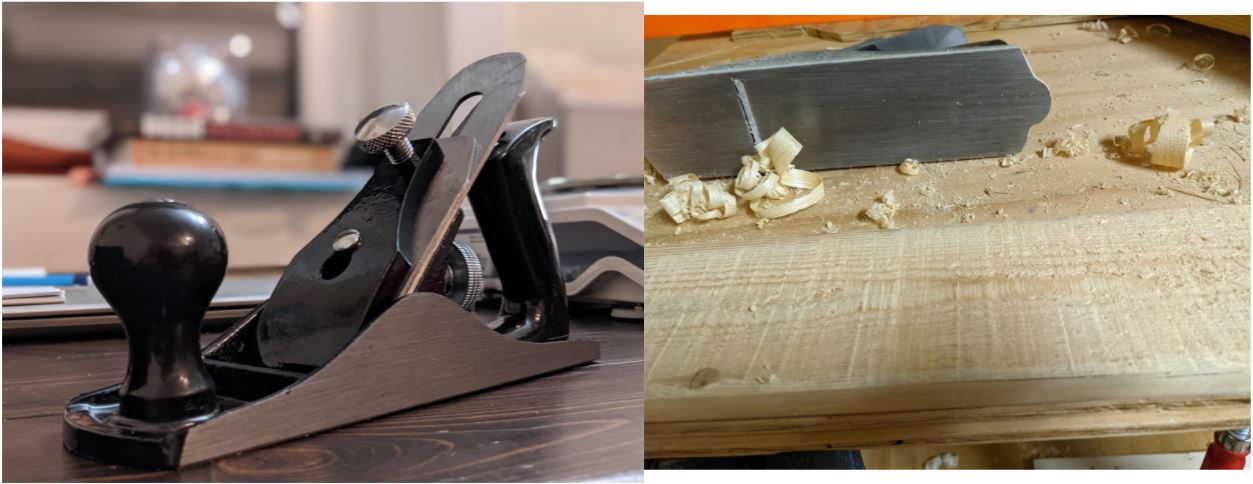I feel like I am doing this project a little backwards. In my last post I mostly discussed materials and current status. I have spent most of the last week working on design refinement. I took a detour to explore another style because of a piece of wood that I really liked, but ultimately returned to the slat table.
First off, I want to talk about my physical work. Near the end of my last post I discussed how in order to square and true the salvaged pallet wood that I am using I tried to use a belt sander. After a while and nearly losing my hearing completely (just kidding, I wore ear protection), I decided to order a bench plane on Amazon… Big mistake
After fiddling with the adjustments on it, I realized that it was just really poorly machined. There was too much play in the set screws and I just couldn’t reliably set the depth of the iron. So then I decided to order a different (but still cheap) plane from Home Depot.

This plane, a Buck Bros, is still not amazing but it works. I have never used a hand plane before, but I spent several hours on YouTube watching videos of how to adjust a plane and how to use it. Ultimately, it took me out in my garage with my hands on it to really get some work done. In about 20 minutes I was able to square a 1”x4”x16” board. That’s not an amazing rate, but I assume it will get a bit quicker as I learn how to better handle the tool. I plan to spend most of the next 7 days planing boards for final assembly.
Once I had my method figured out, I needed to go back to the drawing board to workshop some dimensions. I read on some woodworkers blog that an idea ratio of width to length is roughly 1:1.6. I drew it out as 7 boards with 6 equally sized gaps to equal roughly 9.75”. That mad for a length of 15.6”. While this looks good on paper, I mocked it up in the garage and it just felt too short. Eventually I landed on a ratio of 1:2.2 for the top dimensions in order to get a table that felt more appropriate.
While I was looking over boards, however, I discovered one board with the innermost core ring of the tree in it, which was discolored. I fell in love with the look of it and the wheels started turning. I laid 5 boards out flat to see what a solid top would look like. With this in mind, I pulled out my design notebook and sketched up a quick modern style coffee table with two cavities.

With this idea in mind, I went back to the garage to determine how exactly I could pull off this new design. Unfortunately, I discovered that the core was so shallow in the wood and brittle enough that it would not make a suitable table top board. Oh well, at least I had fun drawing it out.
Finally, I workshopped a few leg ideas. Since I do not have access to a lathe, my options are what I can do with a saw and plane or what I can buy. I am leaning towards buying legs or salvaging some off of something else, but here are the designs that I came up with.


2 Comments. Leave new
Hey James, lots of your pictures didn’t seem to come through but I am very impressed that you chose to use the old fashioned hand held tools to achieve a planed board! This in it self could be an aesthetic! As for the legs maybe use a drill and a wooden dowel and try to create a unique shape! Just and idea! Good luck!
Oh, no. I’m not sure what went wrong with the pictures. They look correct on my end. I will see if I can figure it out. Anyway, thanks for the feedback on the method! I had considered adding legs with a dowel in a sketch I drew up previously. I might have to revisit that idea!